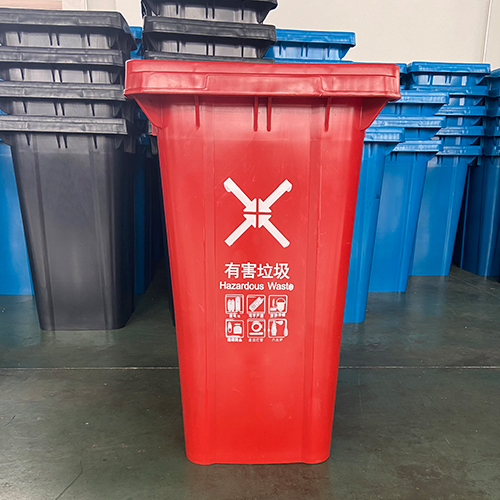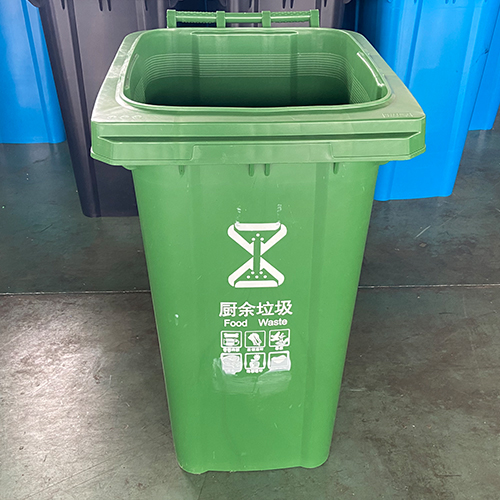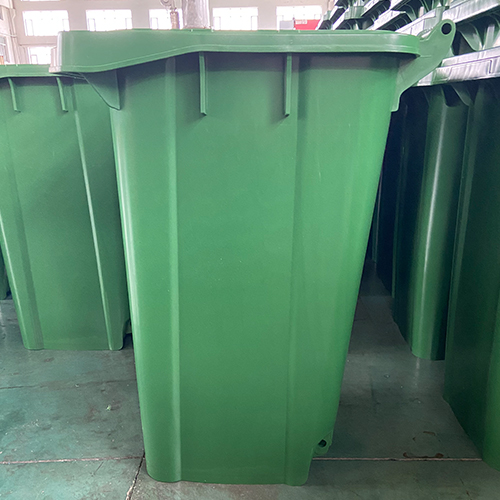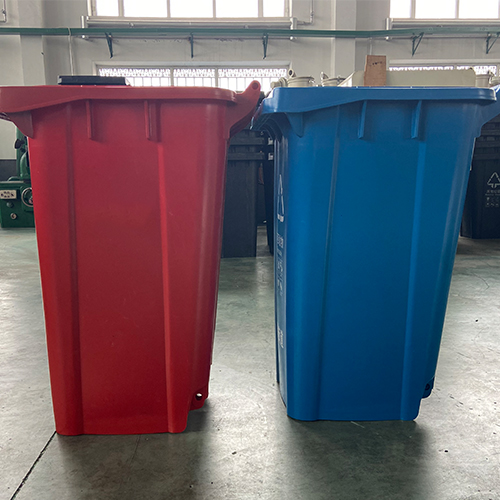With the progress of society and the development of science and technology, how to reduce the workload and improve work efficiency has become a common concern of all sectors of society. The environmental health sector is no exception. The sanitation workers who serve the people are busy cleaning and beautifying the city. Why? Panjin 240L blue trash can More and more popular? So far, many sanitation workers in domestic cities are still using old-fashioned sanitary garbage cans and sanitary vehicles. Due to many factors such as material selection and manufacturing method, the environmental sanitation waste will change color and weaken acid and alkali, thus reducing the service life of environmental sanitation waste under the condition of high working intensity. Poor sealing results in secondary pollution of the environmental sanitation garbage can, which emits bad smell and avoids pedestrians. All kinds of bad environment bring a lot of inconvenience to our staff.

Panjin 240L blue trash can Select the trash can with a lid. Because the kitchen has a lot of garbage with water, it is easy to smell, so it should be covered. Drain the water and seal it at any time before putting it into the garbage can. The garbage can without cover can put some dry and odorless garbage, which is suitable for the bedroom or living room. Waste batteries, fluorescent tubes, mercury thermometers, expired drugs and other hazardous wastes in dry wastes also need to be separately packed and sealed. As the garbage bag will be damaged and pollute the garbage can, it is recommended to clean it once a day. When cleaning, brush the gap with a brush, detoxify it with 84 disinfectant, rinse it and dry it. Seemingly clean trash cans are generally infected with many bacteria, germs and viruses, which is one of the important sources of indoor pollution and is easy to pose a hazard to human health. 240L blue trash can manufactor It is suggested that the household waste bucket with smaller capacity is better. If it is promised, it will remind people to be punctual in clearing waste.

We can often see plastic trash cans in the community. We usually use plastic trash cans at home, but the size difference between the two is very big. Community Panjin 240L blue trash can It's very big. Because we throw garbage into every household, we need to use big ones. When buying plastic trash cans, how should you choose them? let's 240L blue trash can manufactor Let me tell you. 1: From the smell, the bigger the taste of the plastic trash can, the more waste plastic particles will be added. 2: The lighter the color of a plastic trash can is, the better the quality is than that of a plastic trash can with a dark color (remember not to believe the reason why the salesperson thinks the color depth is the amount of color masterbatch added). 3. Observe carefully in the sun. The less black particles or impurities on the surface of the trash can, the better the quality. 4: The direct method is to directly smash the plastic garbage cans. The real gold is not afraid of fire. The sales staff will not stop you from doing this experiment with the garbage cans of good quality. 5: The original way is to buy plastic trash cans at a higher price. It is never wrong to pay a penny for each item.

Panjin 240L blue trash can There are different colors. According to the national unified mark, the domestic garbage is reclassified into five categories Panjin 240L blue trash can They are green classified dustbins, gray classified dustbins, blue classified dustbins, red classified dustbins and yellow classified dustbins. Red classified dustbins represent hazardous substances, sometimes marked with orange. Hazardous substances include waste batteries, fluorescent tubes, paints, expired drugs, cosmetics and other non recyclable substances with certain pollution hazards. Green plastic dustbin In the case of combination of multiple plastic dustbins, green represents kitchen waste. Kitchen waste can be used as fertilizer for plant nutrients. After soil burial, it can be decomposed and absorbed by natural microorganisms and plants, playing the role of waste recycling.






